Legio IIII Flavia Felix
Legio IIII Flavia Felix: one of the Roman legions. Its name means "the lucky Flavian legion".
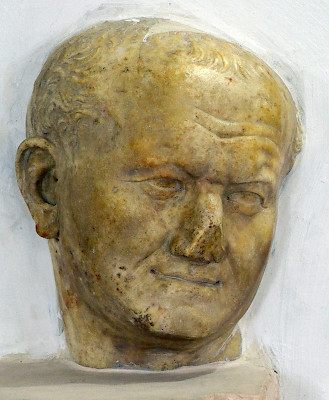
In the summer of 70, the former legion IIII Macedonica from Mainz, which had been disgraced by its conduct during the Batavian revolt (69-70), was reconstituted by the emperor Vespasian under the name IIII Flavia Felix and stationed in Burnum (modern Kistanje in Croatia) in Dalmatia.note The same happened to XVI Gallica, which was also reconstituted under a different name, XVI Flavia Firma.
Although many soldiers of the new unit must have belonged to the old legion, there were also new recruits from northern Italy and perhaps southern Gaul. Gnaeus Julius Agricola (the future father-in-law of the Roman historian Tacitus) oversaw the actual founding of the legion. Because the legion's symbol was a lion, it is possible that it was officially constituted and given its eagle in late July or early August 70.
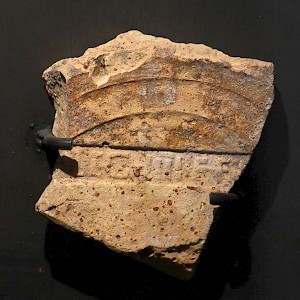
Its first base was Burnum in the province of Dalmatia (modern Kistanje in Croatia). The Fourth Flavian legion replaced XI Claudia, which had been transferred to the Rhine. The presence of IIII Flavia Felix is attested by a couple of inscriptions and several roof tiles and bricks. Among its soldiers was Javolenus Priscus, who became one of the most famous Roman jurists during the reign of the emperor of Trajan.
In these first years of the legion's existence, IIII Flavia received the title Felix. It is possible that it bore this title from the foundation, but it is more likely that it commemorated a victory, perhaps over the Dacians, which were to become dangerous enemies in the next forty or so years. They lived in modern Romania, north of the Danube.
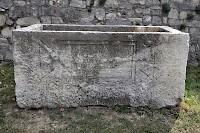
The Dacians invaded the Roman empire in 86 and defeated the legions that were supposed to defend Moesia. The emperor Domitian reorganized the frontier of the Danube and prepared the region for war against the Dacians. The province of Moesia was divided into two provinces, and IIII Flavia was to defend Moesia Superior - the western half of the Lower Danube frontier. It is likely that it was now stationed at Singidunum or Belgrade, although a brief stay at Viminacium (Kostolac in Serbia) cannot be excluded. This was the base of VII Claudia, but several inscriptions suggest that (a subunit of) the Fourth used this base as well.
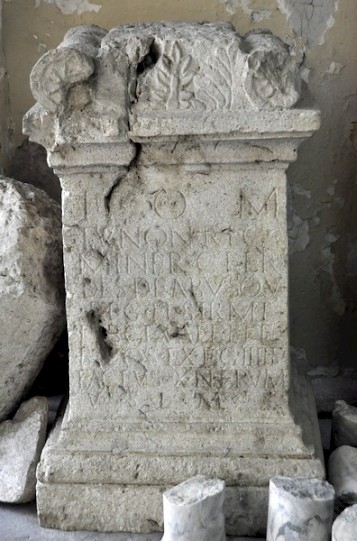
In 88, a large Roman army group invaded Dacia and general Tettius defeated its king Decebalus at Tapae; the Fourth was one of nine legions involved. Unfortunately, the revolt of the governor of Germania Superior, Lucius Antonius Saturninus, in 89, prevented the ultimate success.
In 98, the emperor Trajan ordered the legion to build roads in the region north of the Danube, where Tibiscum (modern Jupa) was founded (and copper mines were explored). The Iron Gate was now protected on both sides by Roman troops. Four years later, IIII Flavia Felix took part in the Dacian campaign of Trajan and was briefly stationed in the capital of the newly annexed territories, Sarmizegetusa. (The other legions in the occupation force were I Adiutrix and XIII Gemina.) A subunit built a fort near Arad in western Romania, where it controlled the Sarmatians, a tribe in eastern Hungary that had annihilated the XXI Rapax in 92, and guarded the road along the river Mures, which connected Dacia and Pannonia (western Hungary).
Trajan's successor Hadrian transferred the legion back to Belgrade and gave up part of the conquests, but Roman troops continued to patrol along the Mures road. A subunit garrisoned Apulum (Alba Julia), which was famous for its gold mines.
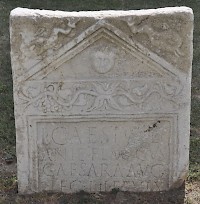
The legion is also known to have guarded several roads in Moesia Superior. A police post at Naissus (modern Niš on the Morava) is mentioned in an inscription. Another post was Ulpiana, where the road from the Danube forked: one branch led to Thessaloniki and the Aegean Sea, the other to Scodra and the Adriatic Sea.
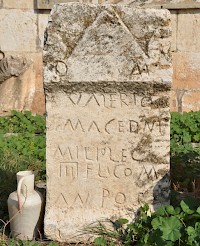
During the reign of Antoninus Pius (138-161), the Danube frontier was quiet and a subunit of the fourth legion could be sent to Mauretania to fight against the Moors.
Monuments of IIII Flavia Felix have been found at Aquincum (Budapest). This suggests that a subunit replaced II Adiutrix during its absence during the wars of Lucius Verus against the Parthian empire (162-166).
The Fourth Flavian legion played an important role in Marcus Aurelius' campaigns against the tribes across the Danube, which were launched in 165. At some stage during the war, a young senator named Aulus Julius Pompilius Piso was placed in charge of I Italica and IIII Flavia Felix, and received a governor's powers. It is likely that he had to organize a province on the far side of the river.
However, a false report that Marcus had died provoked a rebellion in the east, where Avidius Cassius was made emperor (175). Although he was assassinated, Marcus decided to visit the eastern provinces. The fighting was interrupted, and the plans to create a new province were never executed. War flared up again in 178, the Romans having the upper hand. The details remain a bit obscure, but it is certain that IIII Flavia Felix an important role.
One of the legion's officers, in the 180s, was Clodius Albinus, the future emperor.note
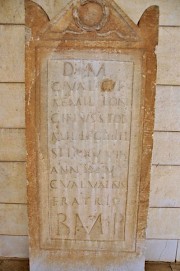
In 193, after the death of the emperor Publius Helvius Pertinax, the Romans fought a civil war, in which the legions of the Danube supported Lucius Septimius Severus, the governor of Pannonia Superior, against Pescennius Niger of Syria and Clodius Albinus - mentioned above - of the western provinces. Severus was successful and was to rule until 211. He finished the Parthian war that had been started by Lucius Verus. Again, II Adiutrix was transferred to Mesopotamia, and again, a subunit of IIII Flavia Felix occupied Budapest.
That another subunit actually joined the eastern campaign has been assumed, because an inscription proves the presence of a soldier at Alexandria in Troas in northwestern Turkey. The fact that the legion was, in these years, commanded by Gaius Julius Avitus Alexianus, the brother-in-law of the emperor and a Syrian native, seems to confirm this.
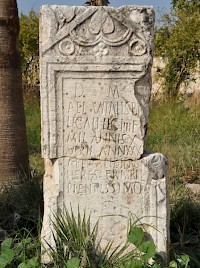
In the third century, several wars were fought against the successors of the Parthians, the Sasanian Persians. That IIII Flavia Felix took part in at least one campaign is likely, because a tombstone of a legionary has been found as far away from Belgrade as Cyrrus in Syria. An inscription from Speyer on the Middle Rhine must belong to one of the wars against the Alamanni (that of Caracalla in 213; Severus Alexander in 235; or Maximinus Thrax in 235-236); again, a subunit of IIII Flavia Felix must have left Moesia Superior. The Fourth was involved in the fights at the Harzhorn, deep in Germany, where many Roman finds were discovered, beloning to a battle waged during the reign of Maximinus Thrax.
It was in Belgrade in c.300 CE, when an inscription was dedicated to the genius ("good spirit") of the legion. Together with the newly-founded units V Iovia and VI Herculia protected the important city Sirmium (Sremska Mitrovica). In 273, soldiers of this unit (and four other legions) were involved in road building activity in Jordan, as is attested in an inscription from Qasr el-Azraq.
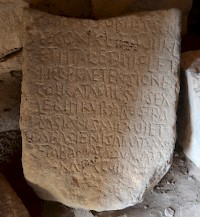
The Fourth Flavian legion was still active in Moesia Superior in the first half of the fourth century, but disappears from the historical record before 400.
Literature
-
Y. Le Bohec & C. Wolff, "Legiones Moesiae Superioris", in: Yann Le Bohec, Les légions de Rome sous le Haut-Empire (2000 Lyon) 239-245
-
I. Piso, "Les légions dans la province de Dacie", in: Yann Le Bohec, Les légions de Rome sous le Haut-Empire (2000 Lyon) 205-225